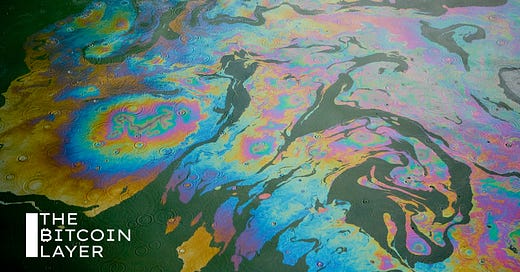Oil spill: why and what's next
A blistering selloff in crude coupled with long-end Treasury rally spells trouble for growth outlook.
Dear readers,
Oil is down about 17% in the past two months. But it’s also up 14% from the year’s lows. It would be unfair to characterize this as an oil crash, but the price action is certainly alarming. It also brought an opportunity to discuss oil as a leading indicator, given our focus of late on equities and sentiment to tip us off on economic contraction—after all, GDP is still 5% on a lagging and preliminary basis. After some reflection, let’s just say that oil is the tell. And this spill is telling us something.
River is the Bitcoin exchange of choice for the long-term investor.
Securely buy Bitcoin at the tightest spreads in the industry, have peace of mind thanks to their 100% full-reserve cold storage custody, and enjoy zero fees on recurring orders. Need help? They have US-based phone support for all clients.
Invest in Bitcoin with confidence at River.com/TBL
Oil slicks
Sharp declines in the oil price, in our experience, are cause for alarm bells. The supply-demand dynamics of energy are widespread, but the strength of the global economy is arguably the primary driver of crude prices. This week’s rapid descent reminded us of that reality, but on a zoomed-out basis, the action isn’t all that horrific:
Let’s say, instead, that isolated weakness in crude prices isn’t the issue—when coupled with a decline in Treasury yields using the 5% GDP backdrop and a decline in the oil/gold ratio, red lights start to blink.
Perhaps then, our economic analysis that suggests contraction is driving some demand destruction at a base level, ending the marginal bid for crude and production broadly. Note that we use marginal to describe the drop off—in a recession, the economy doesn’t stop, rather the person or business on the fence about a decision decides not to consume or produce. When that happens at the individual-decision level, the marginal bid for crude oil disappears, which should drag down the price.
This is why oil prices are one of the greatest leading indicators of them all.








